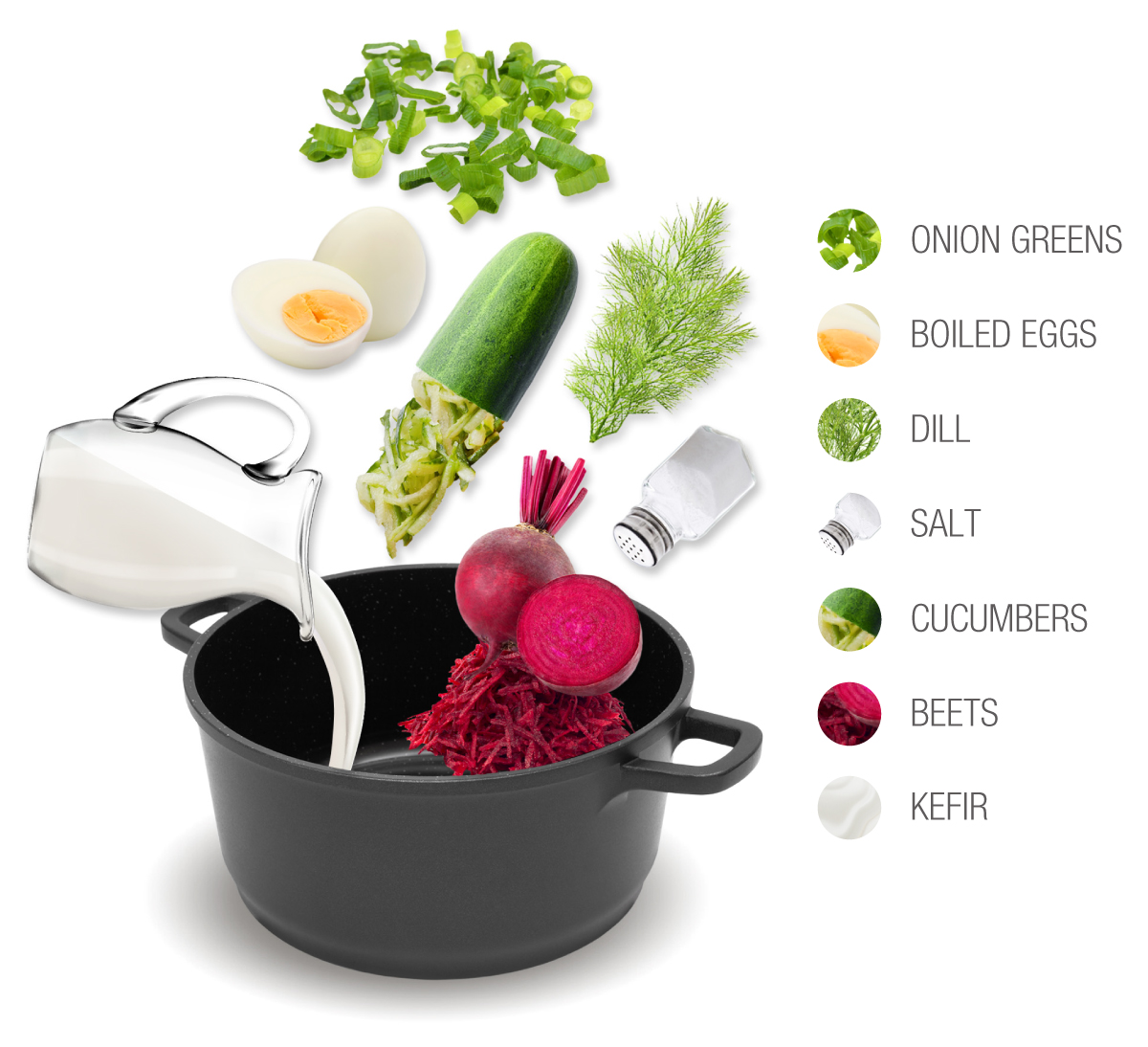This refreshing, cold beetroot soup is a part of traditional Lithuanian cuisine. It consists of a creamy blend of pickled or boiled beetroots and tangy kefir or buttermilk, poured over grated cucumbers and hard-boiled eggs. The whole soup is generously seasoned with dill, and usually left to set until all the flavors are thoroughly combined.
It is usually prepared in the summertime, and is best served chilled, preferably with potatoes on the side. It can be enjoyed as an appetizer or a light main course.
MOST ICONIC Šaltibarščiai
View moreMAIN INGREDIENTS
Rūgštynių sriuba is a traditional soup originating from Lithuania. The soup is usually made with a combination of sorrel, chicken stock, potatoes, onions, bacon, bay leaves, salt, and peppercorns. Diced onions and chopped bacon are fried over medium heat until the onions are soft.
The potatoes are cut into cubes and boiled with peppercorns in a mixture of water and chicken stock. The bacon and onions are also added to the pot, along with the sorrel. The soup is simmered until the potatoes become soft, and it's then served while still warm.
MAIN INGREDIENTS
Aukstā zupa is a refreshing Latvian cold soup with an unusual, deep pink color. It is made with beets, cucumbers, kefir, hard-boiled eggs, and milk sausage. Greens such as dill and scallions are essential, and most people also enjoy the soup with a dash of vinegar.
All of the ingredients are mixed together, seasoned with salt and pepper, and the soup is then left in the refrigerator until well-chilled. It's recommended to serve the soup with a few slices of dark bread on the side. Aukstā zupa is a seasonal dish, so it's practically impossible to find it in restaurants during winter, but most places have the soup on their menus in summer.
MAIN INGREDIENTS
Frikadeļu zupa is a Latvian meatball soup with numerous variations and recipes. The soup is usually prepared with a combination of water, carrots, celery, and potatoes. It is flavored with bay leaves and peppercorns. The meatballs are made with ground beef or pork (or a combination), milk, eggs, onions, flour, and breadcrumbs.
After the mixture is formed into small balls, everything is simmered together until the vegetables and meatballs are fully cooked. When served, this nourishing soup is typically enriched with the addition of sour cream and finely chopped parsley or dill.
MAIN INGREDIENTS
Skābeņu zupa is a traditional sorrel soup. It is made with beef stock, chopped sorrel leaves, pearl barley, onions, potatoes, and lemon juice. Common additions include grated carrots and smoked pork ribs, while hard-boiled eggs and sour cream are typically used as garnishes.
Although skābeņu zupa is most commonly served warm or hot, it is very refreshing when served ice cold on hot summer days. The word skābeņu in the name of this soup is derived from skābs, meaning sour, referring to sorrel’s flavor.
MAIN INGREDIENTS
Thick, creamy, and sweet bread soup called leivasupp is a traditional dish that is usually made with soaked and mashed bread, raisins, fruit juice, cinnamon, and sugar. It is typically prepared with a traditional, dense rye bread, and is often complemented by milk, cream, fresh fruit, and nuts.
This bread soup can be served warm or chilled, and it is usually enjoyed as a dessert or a light afternoon snack, but it is also a popular school lunch in the country.
MAIN INGREDIENTS
Skābu kāpostu zupa, also known as sauerkraut soup, is a traditional dish made with sour cabbage (sauerkraut) as the main ingredient. The soup typically starts with a meat-based broth, often made with pork ribs, smoked pork, or ham hocks, which give it a rich and savory flavor.
The sauerkraut is simmered in the broth, imparting its characteristic tanginess. Additional ingredients like potatoes, carrots, and onions are often added to provide balance and texture, while spices such as bay leaves, peppercorns, and dill enhance the flavor.
TasteAtlas food rankings are based on the ratings of the TasteAtlas audience, with a series of mechanisms that recognize real users and that ignore bot, nationalist or local patriotic ratings, and give additional value to the ratings of users that the system recognizes as knowledgeable. For the “Top 7 Baltic Soups” list until April 15, 2025, 1,325 ratings were recorded, of which 366 were recognized by the system as legitimate. TasteAtlas Rankings should not be seen as the final global conclusion about food. Their purpose is to promote excellent local foods, instill pride in traditional dishes, and arouse curiosity about dishes you haven’t tried.












